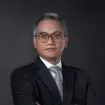On November 28, 2023, the Minister of Manpower (the "MOM") issued Regulation No. 11 of 2023 on Occupational Health and Safety in Confined Space ("Regulation 11"). Regulation 11 is issued to protect the workers who work in confined place against any potential dangers and to provide safe, secure, comfortable, and healthy workplace as mandated under Law No. 1 of 1970 on Occupational Safety.
We set out below certain key points of Regulation 11.
♦ General Overview of Occupational Safety and Health in Confined Space
Confined space is defined in Regulation 11 as space that is quite spacious and has a configuration of such that a worker may enter and perform work in it, has a limited access to enter or exit, and is not designed for a worker to work in continuously or constantly (the "Confined Space").
Under Regulation 11, the Management and/or a Company that conducts work or business in the Confined Space is required to implement the Occupational Health and Safety (Keselamatan dan Kesehatan Kerja or "K3").
Further, Article 3 of Regulation 11 provides that the Confined Space includes as the following:
- Tanks and/or vessels, boilers, kitchen/furnace, silos, chimneys;
- Pipelines, tunnels and other similar underground construction;
- Wells or holes having an opening in the upper part of it, whether natural or artificial, which exceeds a depth of 1.5 (one point five) meters; and/or
- Other space specified as the Confined Space by the Management and/or the Company.
Please note that a Manpower Supervisor may also conduct an assessment and/or a test to determine the Confined Space other than what is specified in point d above. The Management and/or the Company then shall determine certain space to be the Confined Space following the assessment and/or test of such Manpower Supervisor. Any failure to do so may be subject to applicable sanctions under the laws and regulations. In this case, referring to Law No. 1 of 1970 on Occupational Safety, such sanctions may be a monetary fine of up to Rp100,000 or imprisonment of up to 3 (three) months.
The implementation of K3 by the Management and/or the Company shall include the following:
- the determination of the classifications of the Confined Space;
- any restriction of access to enter the Confined Space;
- any entry permit;
- the safety work procedures;
- the equipment and supplies; and
- the K3 personnel.
♦ Determination of Classifications
The determination of classifications of the Confined Space is conducted by identifying the level of potential danger of the Confined Space. In this regard, the classifications shall include the (i) Confined Space with an Entry Permit, and (ii) Confined Space without an Entry Permit.
The Confined Space with an Entry Permit has the following characteristics of potential danger:
- Hazardous Atmospheric Gas;
- Potential of liquid or solid materials that may engulf (engulfment) the workers inside;
- The shape or the structure of the space in such a way that has the potential to cause workers to be trapped (entrapment); and/or
- Other potential sources of danger that can result in injury or death.
The Confined Space without an Entry Permit is the Confined Space that has no characteristic of the potential danger as mentioned above.
The restriction to enter into the Confined Space may be in the form of (i) closing, locking, and marking, (ii) installation of barriers, and/or (iii) installation of non-entry sign.
♦ Entry Permits of Confined Space
An Entry Permit is required for any person that wishes to enter the Confined Space with an Entry Permit. It shall be noted that the work may not be conducted without the issuance of the Entry Permit.
An Area Person-in-Charge shall make sure that any person who wishes to enter the Confined Space with an Entry Permit has a permit to enter such Confined Space. This Entry Permit shall be granted by the Area Person-in-Charge to the workers who enter the Confined Space once such Confined Space passed the assessment of the K3 requirements by the K3 Experts.
The assessment of the K3 requirements by the K3 Experts shall be based on certain K3 aspects such as test and monitoring of hazardous atmospheric gas, air test, communication, personal protective equipment, emergency rescue procedures. Kindly note once the assessment of K3 requirements by the K3 Experts has been completed and the Entry Permit has been issued, the K3 Experts still have the right to monitor several aspects of K3 requirements, potential danger of the Confined Space, or potential violation of K3 requirements.
♦ Safety Work Procedures and Equipment
In relation to the K3 requirements that are applicable to the Confined Space, Regulation 11 provides that a Safety Work Procedure shall be made as a basis for the implementation of works to Enter the Confined Space. This Safety Work Procedure shall be made in accordance with the job safety analysis and K3 requirements that are applicable to the Confined Space under Regulation 11, such as, among others, the hazardous atmospheric gas test, cleaning of hazardous materials, air circulation system, provision of communication system, etc.
Further, Regulation 11 also requires the Management and/or Company to provide the equipment and supplies for any work inside the Confined Space. These equipment and supplies include, among other, equipment to test and monitor the hazardous atmospheric gases, air circulation equipment, communication equipment, personal protective equipment, and lighting equipment. These equipment and supplies need to comply with the technical standards either nationally or internationally, as applicable.
♦ K3 Personnel
Under Regulation 11, there are 3 types of the K3 Personnel with their own tasks and authorities in the implementation of the K3 in the Confined Space, namely (i) a Confined Space K3 Technician. (ii) a Confined Space Gas Detention Technician, and (iii) a Confined Space K3 Rescue Officer.
All of the K3 Personnel are required to have their applicable K3 licenses/competency certifications as required under the laws and regulations.
♦ Supervision
The supervision on the implementation of any provisions under Regulation 11 shall be conducted by the Manpower Supervisor (i.e., the appointed official) in accordance with the applicable laws and regulations.
The content of this article is intended to provide a general guide to the subject matter. Specialist advice should be sought about your specific circumstances.


